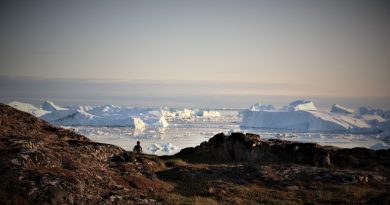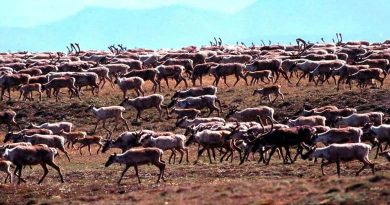Arctic ice algae highly polluted with microplastics, poses food chain threat: study
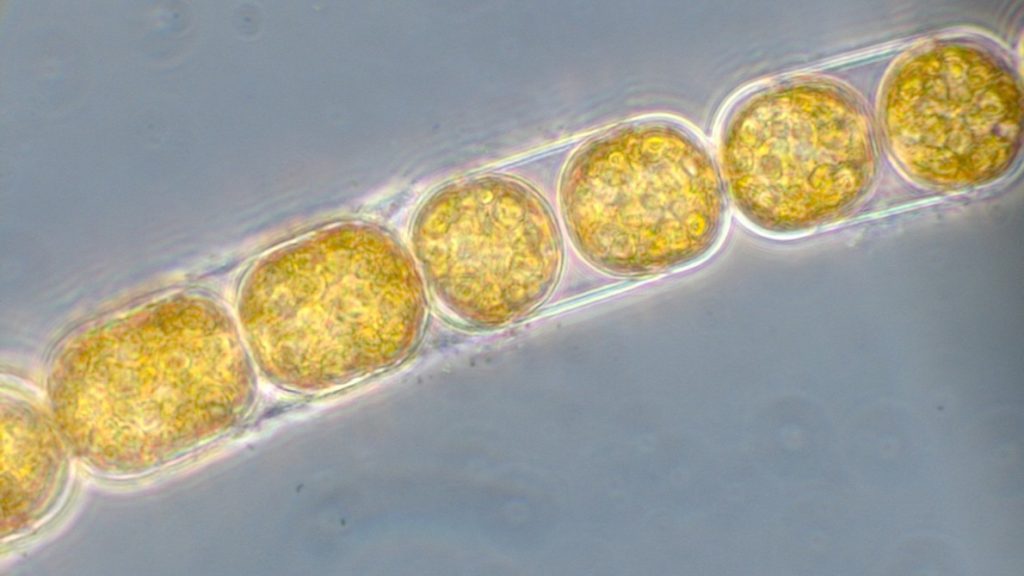
Arctic ice algae has been found to contain ten times more microplastics than surrounding sea water, something that could impact organisms higher up on the food chain, says a recent study.
The algae, melosira arctica, grows under Arctic sea ice. The dead algae can also clump and travel quickly to the sea bottom, transporting the plastic pollutants with it, the paper’s researchers say.
“We have finally found a plausible explanation for why we always measure the largest amounts of microplastics in the area of the ice edge, even in deep-sea sediment,” Melanie Bergmann, a biologist with the Alfred Wegener Institute, Helmholtz Centre for Polar and Marine Research (AWI), and lead author on the study, said in a statement.
The algae first forms into metre-long cell chains under the ice during the spring and summer months. Once they form clumps, researchers say they can sink several thousand metres to the sea bottom in one day.
“The speed at which the Alga descends means that it falls almost in a straight line below the edge of the ice,” Bergmann said.
“Marine snow, on the other hand, is slower and gets pushed sideways by currents so sinks further away. With the Melosira taking microplastics directly to the bottom, it helps explain why we measure higher microplastic numbers under the ice edge.”
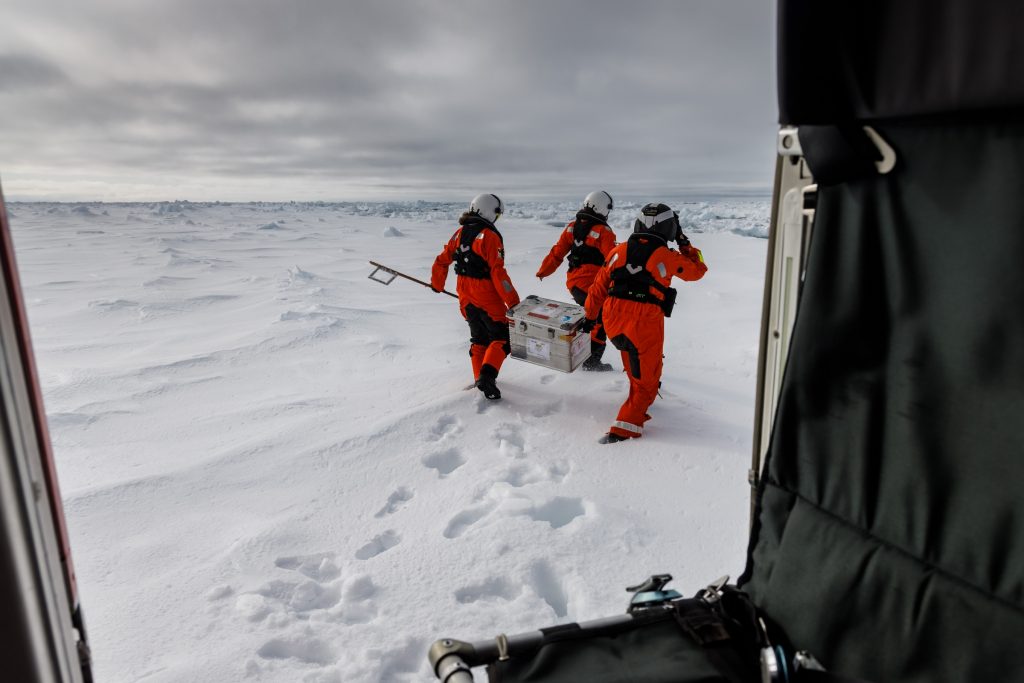
To do the research, Melanie Bergmann and a research team, collected samples of the algae in the Arctic in the summer of 2021.
It was then analyzed for plastic content by colleagues at other institutions including Canada’s Dalhousie University in Nova Scotia.
That analysis found that the algae clumps included an average of 31,000 ± 19,000 microplastic particles per cubic metre, equalling approximately ten times the concentration in the surrounding water.
“The filamentous algae have a slimy, sticky texture, so it potentially collects microplastic from the atmospheric deposition on the sea, the sea water itself, from the surrounding ice and any other source that it passes,” Deonie Allen, from the University of Canterbury and Birmingham University, said.
Food chain concerns
Examples of just some of the kinds of plastics found in the Arctic include polyethylene, polyester, polypropylene, nylon, and acrylic.
The amounts of microplastics in the algae are a concern both for organisms under the ice, as well as the bottom of the sea, say researchers.
They note that zooplankton organisms associated with ice are found to have microplastics. They are then eaten by fish like polar cod, that can then be eaten by birds or seals, which are in turn eaten by polar bears.
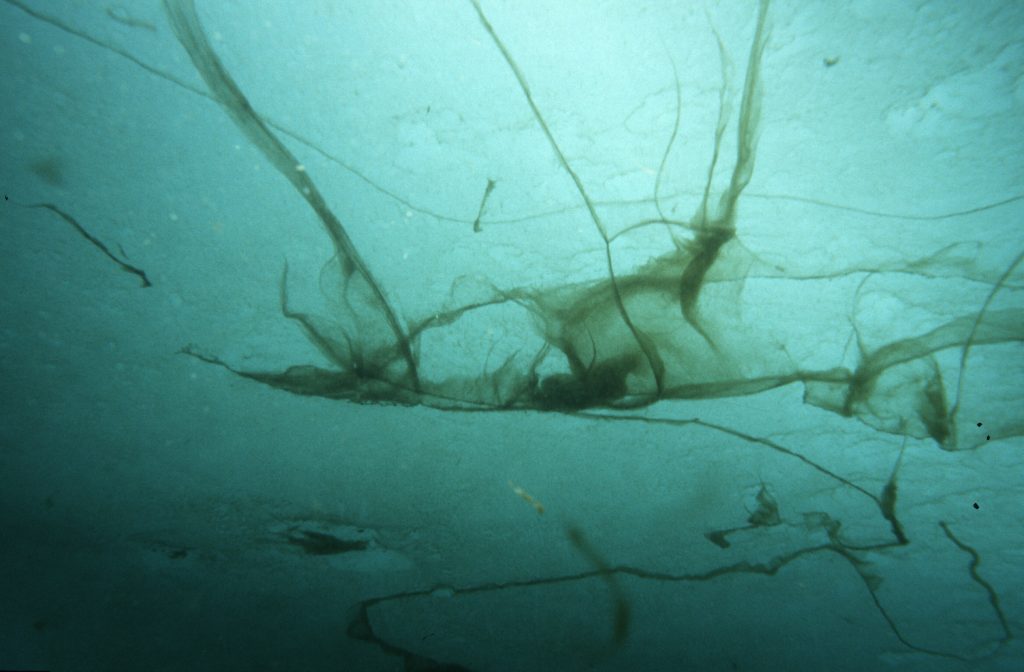
These microplastics eventually are also ingested by people.
People in the Arctic are particularly dependent on the marine food web for their protein supply, for example through hunting or fishing,” Bergmann said.
“This means that they are also exposed to the microplastics and chemicals contained in it. Microplastics have already been detected in human intestines, blood, veins, lungs, placenta and breast milk and can cause inflammatory reactions, but the overall consequences have hardly been researched so far.”
Steve Allen, a research team member from Dalhousie University, says this can have a number of effects.
“Micro and nano plastics have basically been detected in every place scientists have looked in the human body and within a plethora of other species,” he said. “It is known to change behaviours, growth, fecundity and mortality rates in organisms and many plastic chemicals are known toxins to humans.”
Bergmann say reductions in the product of new plastics could go a long way towards reducing the amount of microplastics making their way into the environment.
The study “High levels of microplastics in the Arctic ice alga Melosira arctica, a vector to ice-associated and benthic food webs” was published April 21 in the journal Environmental Science and Technology.
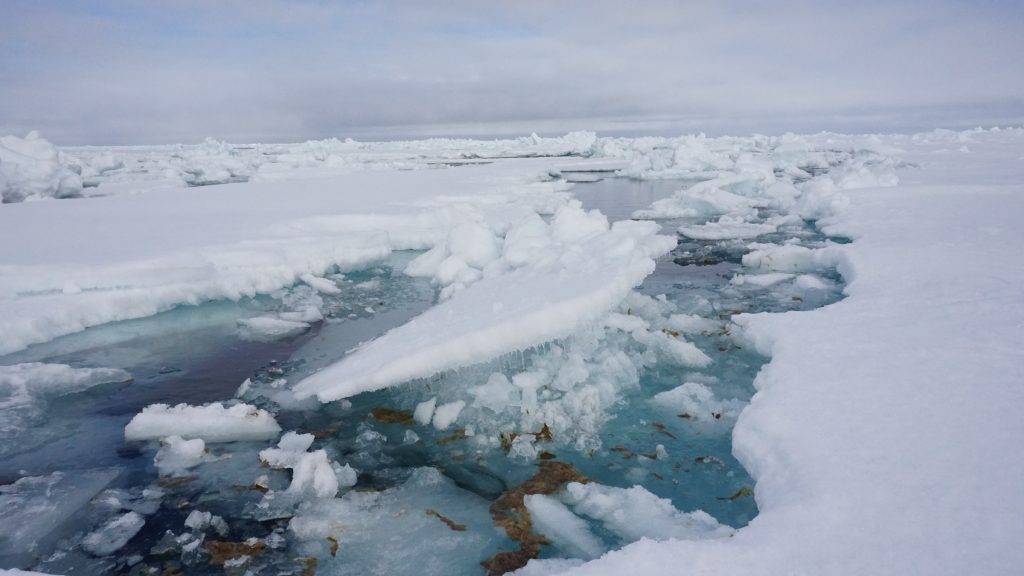
Write to Eilís Quinn at eilis.quinn(at)cbc.ca
Related stories from around the North:
Canada: Cotton fibres, microplastics pervade Eastern Arctic, study finds, The Canadian Press
Finland: Citizens’ initiative prompts Finnish lawmakers to consider microplastics ban, Yle News
Norway: Report reveals high levels of microplastics on Norway’s Arctic coast, The Independent Barents Observer


